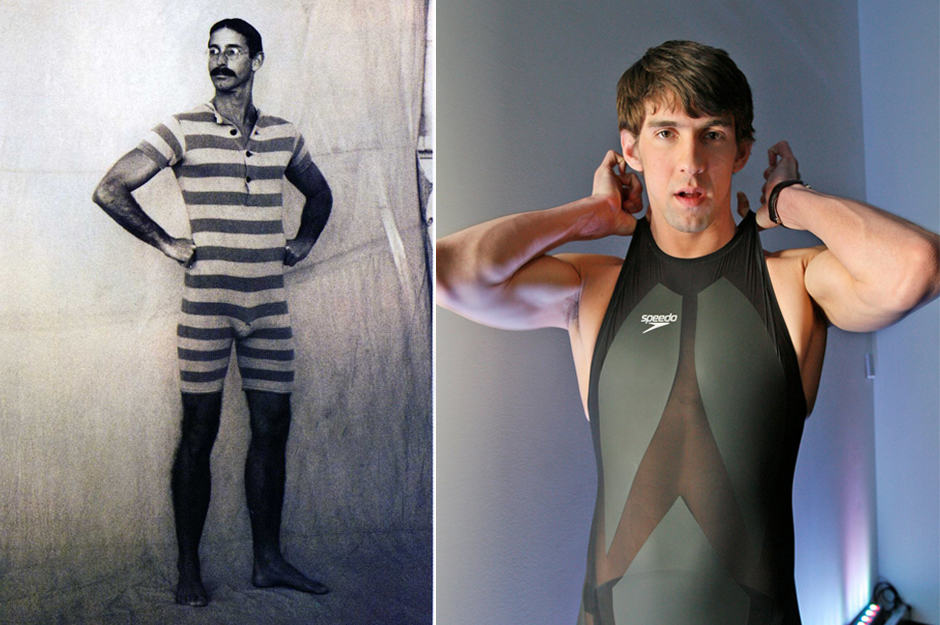In the Summer Olympics of 1912, Canada’s George Hodgson broke the World Record for the 1500m freestyle with a time of 23:23:00 minutes. In 2012, Sun Yang of China demolished his opponents, and set his own world record in just 14:31:02. How is it possible that today’s athletes are so much faster than yesteryear’s? We have not exactly evolved drastically in the past 100 years, but there is a large change that can be noted: the evolution of technology.
A significant part of athletic improvement in recent years has to do with adaptations made to sporting equipment.
At the beginning of the twentieth century, most swimsuits were made of heavy, woolen knitted materials, which pulled and slowed swimmers down almost as soon as they entered the water. Swimsuits are now made out of polyurethane, which decreases the amount of friction between the swimmer’s body and the water, so much so that in 2009 when these suits were first unveiled, 168 world records were broken.
Polyurethane swimsuits have since been banned due to the unfair advantage that they give to professional athletes, but they do show how important equipment advances are in an athletic setting.
We can see how these assistive technologies are helpful in all sports, and each sport has made major changes in how their equipment aids athletes to achieve new record-breaking heights.
The entire goal of using science and technology to assist athletes is to drive humans to greater and higher levels of performance. One advantage of technological advancement in athletes’ supporting aids and personal protective equipment, that is often overlooked is how it increases performance as well as protecting the athletes.
Helmets are known to serve a very important purpose in trying to decrease cranial or spinal damage in many different sports. In the 1920s, football helmets were made out of soft leather and were not at all effective against head injuries.
After, helmets were made out of hard leather, then further evolved to use plastic, then polycarbon. Additional features are added to many helmets such as cages and chin guards, varying from sport to sport.
These helmets are now lighter and more effective in preventing injury, and most of this has to do with the evolution of design technology and the development of new compounds that resist damage. Helmets are now designed to be lighter, more protective, more aerated, and allow the players to better see through face-protective features than previously.
Without these important aids, athletes would not have the personal protective equipment they would need to play hard and worry less about the chance of injury.
Technological advancements are also being used to help our athletes train more effectively. Athletes are becoming more and more adept to using instant replay and video analysis technologies to improve when training.
Athletes can record themselves and use instant playback and slow motion to help them perfect their game with high-definition video or smart phone apps. They are able to analyze all angles and details of their movements and make adjustments to their personal mechanics to improve performance.
Referees and umpires can also use this technology to help them make accurate calls.
Additionally, programs like BodyByte are being used to help athletes manage their nutrition, training, and fitness for optimal athletic outcome.
Training hard and training well has become a staple for every athlete, and new computer programs just make it that much easier to train and play more effectively.
Comparing athletes from the past with our current athletes yield major differences that technology has had on specializing our athletes to make them the perfect machines for their specific sport.
Our athletes are training harder, but more importantly, they are training more effectively due to advances in sports technology. Through evolution in sporting equipment, supporting aids, and new training technologies, who knows what the future holds for our forthcoming athletes?


